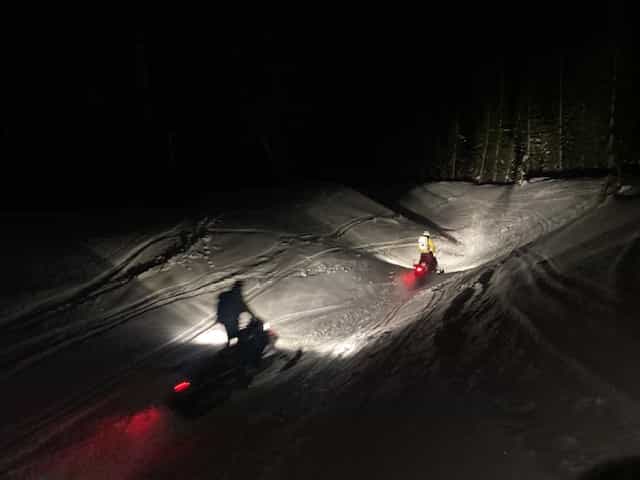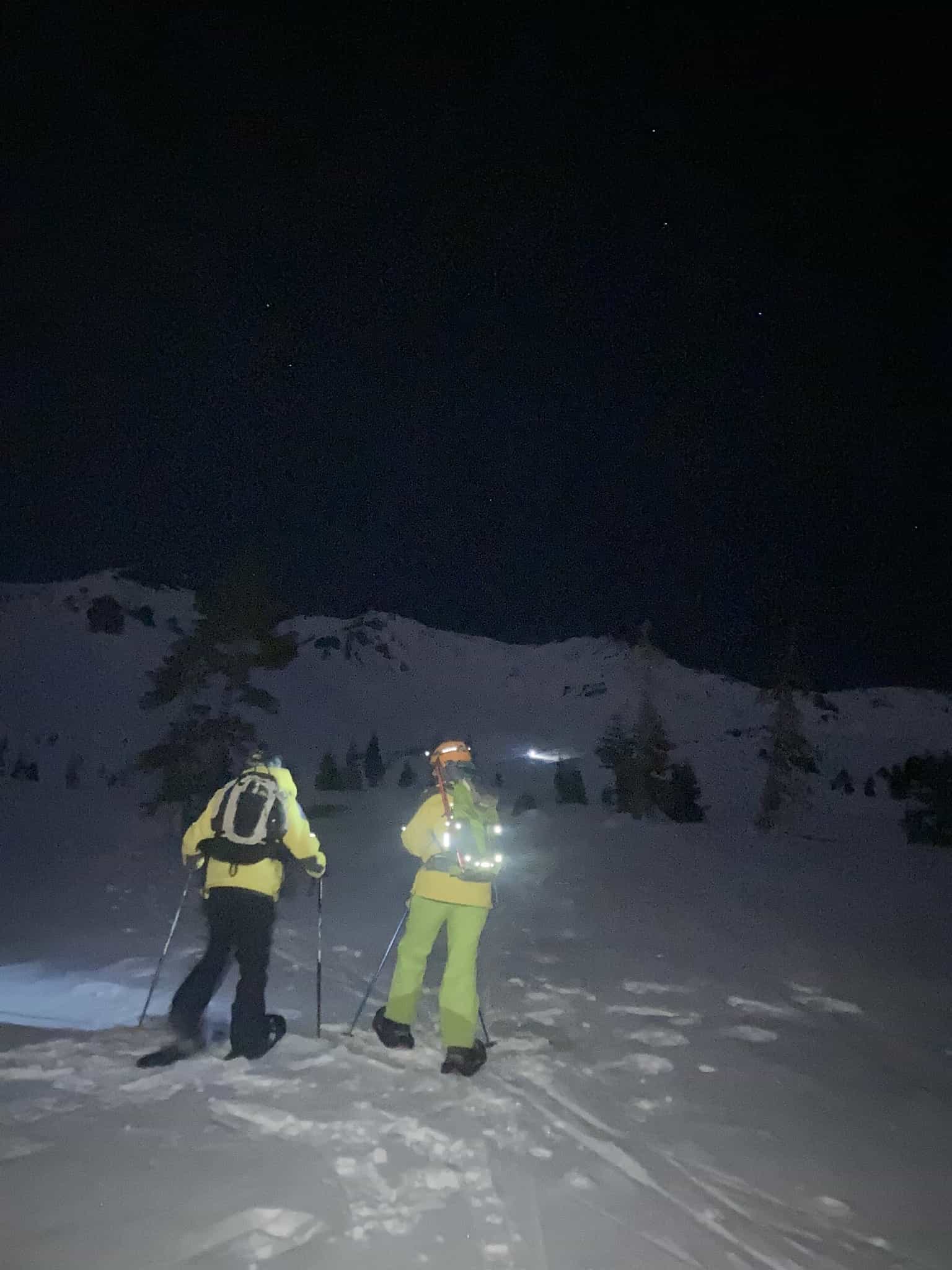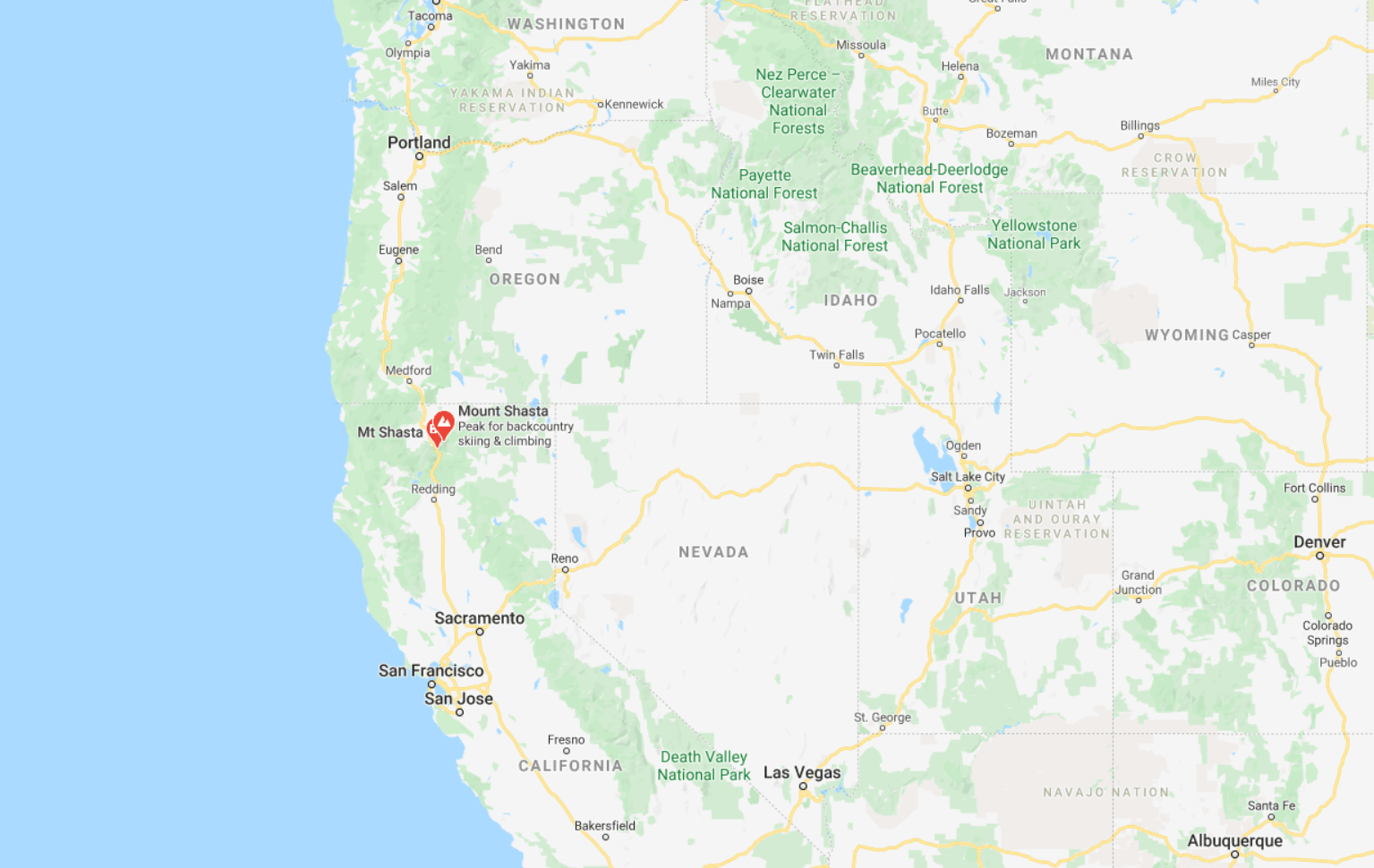
On Friday, March 7, at 6:17 p.m., the Siskiyou County Sheriff’s Office Dispatch Team received a call from a skier who injured his leg in a skiing accident at approximately 10,000 feet on Mount Shasta, California.
The reporting party, a 39-year-old male, was an experienced backcountry skier from Canada and had spent the prior two days summiting and exploring the mountain. During his final descent through Avalanche Gulch Friday evening, he crashed and sustained a serious injury to his lower leg. Unable to move, the skier, traveling solo, managed to call 911, prompting a rescue effort.
The Siskiyou County Search and Rescue Team (SAR) and Mount Shasta Avalanche Center & Home of the Climbing Rangers were mobilized to respond to the Bunny Flat parking lot, from which they launched a series of hasty teams, including skiers, a snowmobiler team, and a snowshoe team. When rescuers reached the injured skier, they determined that he had suffered a broken tibia/fibula but was in otherwise stable enough condition to be skied down the mountain in a litter. At approximately 10:32 p.m., the Climbing Rangers and SAR team arrived back at Bunny Flat with the skier and delivered him to an awaiting ambulance.

This incident underscores a few important reminders about backcountry travel, particularly in wintertime:
First, avoid skiing, climbing, snowmobiling, or even hiking alone, especially in high-consequence terrain such as the upper elevations of Mount Shasta. Having a trusted partner with you in the backcountry is critical to making sure someone can call for help, render first aid, and provide feedback regarding the potential hazards of your route.
Second, always wrap up your outdoor recreation activities when there is still plenty of daylight to hike or ski out of the backcountry. Nighttime makes snow travel and navigation more complex and complicates or delays rescue efforts. For instance, the skier in this incident did not begin his descent until twilight, so a swift air rescue was no longer possible by the time his accident occurred.
Third, always check the avalanche forecast and snow conditions for the area you plan to recreate. Although an avalanche did not cause this skier’s injuries, critical information should always be a factor in your wintertime trip planning and route-finding. Ensuring that your group is carrying avalanche beacons, probes, and shovels is a must if you plan to travel through avalanche terrain. You can find the daily forecast here.
In closing, we’d like to thank the USFS Climbing Rangers and our SAR volunteers for their fantastic work in swiftly and safely retrieving the injured skier.
Mount Shasta is a stratovolcano situated in the Cascade Range of northern California. It stands at an elevation of 14,179 feet, making it the second-highest peak in the Cascades. The mountain is considered potentially active, with its last eruption in 1786. It holds cultural significance for indigenous tribes and is a popular destination for outdoor activities such as skiing and climbing.
